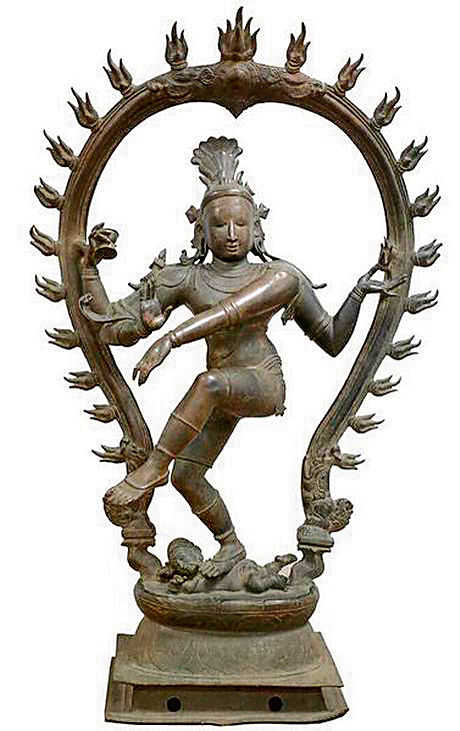
In just one decade in the 1970s, 50,000 art objects were smuggled out of India
Rahul singh
The Archaeological Survey of India (ASI), one of our many inefficient and ineffective government institutions dealing with art and culture, is making another effort to get the Indian public register their so-called antiques. I am sure the effort will be just as spectacularly unsuccessful as the first one in 1972. An antique is any work of art that is over 75 years old — for a painting — and more than 100 years old for other works of art, such as sculptures or artefacts. There must be hundreds of thousands, if not millions, of Indians who have such “antiquities”, handed down to them by their forefathers or acquired by them. I doubt if even a tiny proportion has been “registered” by them, as is required by the Ministry of Culture. After all, ASI’s own record is miserable: Out of an estimated seven million antiquities in India, only a little over one million are documented, and between 2008 and 2012, over 4,400 items were stolen from the 3,676 ASI-protected monuments, according to the National Crime Records.
In 1972, an Antiquities and Art Treasures Act was passed, which said such registration was obligatory, failing which the art objects could be confiscated by the authorities without any compensation. To register an antique, photos of the item, along with a form, have to be submitted to the ASI office. Till now, to take just one ASI office, that of the Mumbai circle, only a little over 3,000 antiquities have been registered, a ridiculous number.
Clearly, most people do not trust the bona fides of the government. So, even if they have paintings and artefacts that they know are more than 100 years old, they do not want to disclose it. What is true of Mumbai must be true for the rest of the country as well. I am probably among the very few to have registered some of my “antiques”.
These include a couple of miniature paintings and small metal sculptures of Hindu gods that I got from a dealer and from Mumbai’s “chor bazaar”. I was assured these were quite “old” and I think I then paid around Rs 1,000 for all of them. However, as a law-abiding person, when I read about the Act in 1972, I duly did what was required. How many more will do so, now that another “registration” drive has been launched? Very few, I am sure.
Sold illegally and smuggled
The Ministry of Culture needs to think of something else if it wants to unearth ‘antiquities’, or to prevent their illegal sale and smuggling out of the country. According to Unesco, in just one decade in the 1970s (that is after the 1972 Act was passed), 50,000 art objects were smuggled out of India. Many of these found their way to art galleries, museums and collectors all over the world.
Norton Simon, American collector of Asian art, admitted to the London Times that in one year alone, in 1972, he had spent “$15 to 16 million” in acquiring ancient Indian art, and that most of it had been smuggled, including a Chola-period bronze Nataraja. Two of the world’s most reputed auction houses, Sotheby’s and Christie’s, have employees who allegedly work in connivance with Indian smugglers, and even websites like eBay sell Indian antiques.
Curious case
In the mid-1970s, on a visit to Paris, I was staying at a hotel on the plush and trendy Boulevard St Germain. It had several fancy boutiques and shops selling antiques. Curious, I went into one that had what looked like an ancient Indian sculpture. Its going price was many thousands of dollars. I got talking with the shop’s owner and asked him how he had acquired it. He gave me the name of a well-known Bombay socialite. Intrigued, I went to another shop, which also had some Indian sculptures. I asked its owner the same question and got the same reply. I later found out that the socialite was the wife of a famous golfer. The question is, how did those antique pieces reach Paris? For, after 1972, nothing over 100 years old could be legally exported abroad.
However, two persons who were definitely big-time smugglers of Indian antiques were the film actor and producer Manu Narang (his family also once owned Mumbai’s five-star, Ambassador hotel) and Subhash Kapoor. Narang fled to the UK to avoid prosecution and died in 2001; Kapoor is presently in jail in Chennai and is facing 86 charges in New York of running a $145 million smuggling ring and “stealing and possessing millions of dollars worth of artefacts” (Officials of the Metropolitan Museum of Art are looking into whether the looted antiquities sold by him ended up in their collection).
The laws in the UK and Canada permit their citizens to place their art, even if it is more than 100 years old, on sale in the local or international market, with the State given a chance to match the highest bid. Why not have a similar law in India?
Art curator and historian Naman Ahuja says that present laws are drafted in such a way that people are deterred from building private collections. I suggest getting him and other eminent curators (Chandigarh’s Professor Goswamy comes to mind immediately) to chalk out a suitable plan. India’s art heritage is at stake.
— The writer is a veteran journalist



























